Sound Impression
The dedicated converter will be introduced sometime in the future (perhaps before the Summer), so for now I have to use some other. It will be Sigma from Ayon and the new Hegel HD30 – both balanced and both high quality, so they will be perfect for the job. Lets start with the cheaper Ayon.
With Ayon Sigma DAC
To be frank, I got a bit discouraged, because the number of features and headphones multiplied by two converters results in chaos that is hardly possible to control. I wish I could simplify it somehow, but there is no way. Each headphones are important, and so are the modes so it would be difficult to do without anything.
For a start I picked the most classic Sennheiser HD 600 and plugged them in as always – unbalanced. These headphones will be the most plain and common in my test. The beginning was also modest, I started from solid state input, the one with white light.
You could say that it was the headphones that were bad and the amp was amazing. Bad because it was like stabbing a dagger in the heart of the more expensive headphones. They are capable of playing so extraordinarily and beautifully that I started to think I didn’t need anything better. Because it was great even in the transistor mode, and when it comes to particular aspects, they were all superb. The only thing I could complain about was the stage – like a circle above the head. The center was not before your eyes but above the head. Admittedly, it is possible to adjust it with 3D control, but not much. Apart from that, everything was great, most of all the sound itself. Its every aspect was beautiful: prominent but not overstated performers, their reality and overall pleasure from listening. The sound was somewhat dimmed, but not very much for these headphones, with exceptional depth and melody flow. Delicate, yet strong, with glittering particles of the bustling background and plankton all-dancing in the space. The depth of sound, fully extended range and perfect trebles – outstanding. In general, it was so good that you would want to just sit there and enjoy. The saxophone was blowing and the vocal was so great that I couldn’t believe cheap headphones could do that.
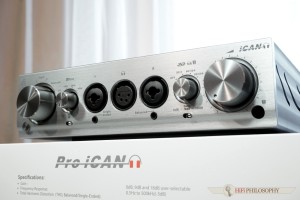
The owner of this amplifier has at his disposal up to six headphone outputs – three balanced and three single-ended.
So, half-heartedly I moved the slider to “Tube” position and then the sound became a bit lower and brighter. It also became more smooth, coherent, warm and closer, whereas the saxophone gained more air, playing closer to the trebles and attacking. It all became noticeably different and better in a few aspects, but still the “Transistor” mode won my full admiration. The lamp improved realism, supported by the closeness, but it was more in a sense of getting closer, not that it sounded better. Once more I moved the slider to “Tube+” mode and then two, or even three things changed. The sound became a bit more tough, darker, the textures became more rugged, deprived of softness. It wasn’t more rough, but kind of more grainy, which I liked quite a lot. What I didn’t like was that the saxophone became more quiet, keeping trebles peaks under control. I also reached (in “Tube” mode) for a song with enormous scene and reverb – and it was really convincing, without this circle over the head. The distanced perspective lays right before your eyes and the amazing sounds are contained in vast space. The music was at the same time close and spacious, also quite light, full of air, decay and charm.
Then I reached for AudioQuest NightHawk with balanced cable for a start, as they happen to have one. I only used “Tube” mode not to overload the amp with constant switching. From the first second I could feel noticeable improvement. In darker aura, under darker sky, the sound attacked more ferociously and was more versatile. As if the sound was brought in by more birds and they flapped their wings stronger. What’s more, it was more mysterious, with vigilant atmosphere. The bass was noticeably stronger and more prominent. The whole space was vibrating with it, becoming more vivid, and everything was bustling with rich musical life. But not to the extent to cause me lose my faith in HD 600, having in mind how much more joyfully they played. But NightHawks had more to offer, that goes without saying. I switched back from electro to vocal and saxophone – and I liked it less as the sound was more rumbling, which was again caused by the bass. It wasn’t as melodic as before with HD 600, showing the poor quality of the song, making me switch to “Transistor” mode, which caused the bass to calm down a bit and make everything more smooth. So with tubes different things can happen, and it’s not always the case that transistors are useless. However, in the case of NightHawk, it was “Tube+” that worked the best, combining together the profusion, dynamics and control over distortion. In general, it was slightly better than with HD 600, because, as I’ve mentioned, there was more going on and everything was closer, but the difference wasn’t great, that’s for sure. What was also better is that the mentioned circle has been lowered, moving closer to the head, eliminating the unpleasant feeling of sounds being above the head in some songs. I’ve also tried the headphones with unbalanced cable, which resulted in less prominent sounds and diminished profusion, proving that it all stemmed from balance. Therefore, HD 600 with a balanced cable would probably play better too, but because I don’t have one, I cannot tell for sure.
With Hegel HD30 DAC
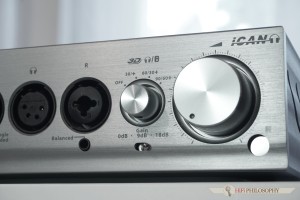
On the right side we find the volume and the gain control, as well as the already known 3D Holographic switch.
I’ve written about HifiMAN HE-6 and Audeze LCD-4 with Ayon in the review of the latter. Now I would like to invite them to a meeting with quite more expensive converter from Hegel. Of course more expensive doesn’t necessarily mean better, but it’s not a surprise when it turns out to be so.
Hegel HD30 will have its own review soon and then its pros and cons will be carefully assessed. Now I will only mention that the main difference between it and Ayon Sigma is in the style, as it is most of all pleasantly musical, and not boldly dynamic. So you could say that its style matches both flagship Audeze, which I will try out in a moment, together with planar HiFiMAN. But it wouldn’t be enough and there would be nothing corresponding to Sigma, so I’ve reached also for NightHawk. More importantly, before using the more expensive converter, I had a session with another amp, because, well, you just cannot predict the sound. You can’t guess how two devices will sound together, and even if you do, then it’s just luck. Of course, you can predict some things beforehand, but if I tried writing a review based on intuition, I would put myself into trouble. So with different amps and converters, you have to compare and only then you can have a better idea about them. Therefore I’ve checked Hegel converter with balanced amp from Phasemation and another one from Schiit that has been recently reviewed, so to have an idea about its style. In both sessions it turned out to be placid, subtle, with exceptional musical depth, not like Ayon Sigma with thunderous elements. Such a placid style has its advantages but also disadvantages. Placidness paired with subtlety, interlaced with light, pastel colors and sprinkled with warmth is very pleasant in reception and rather unique at the computer and always very expensive, it cannot, however, offer the full musical range. Because where are the peaks, charges, thumps? Where are bold accords and powerful orchestras? What good is creamy play when you want something spicy? A dessert is a part of a meal, but not the main course. So, with all sympathy towards delicate music, I felt like it lacked something, especially compared to the vigorous Sigma. However, as all audiophiles know, the art is to compose a well matched set of devices. So that the final effect coming out of the speakers is complete, not perfect in just one aspect. So that everything is in the right proportions. In this set, it is clear that ifi has turned out to be a better partner to Hegel. Better matched and filling the gaps. Because on its own it’s more aggressive and dynamic, and in “Tube+” mode it also plays more dark.
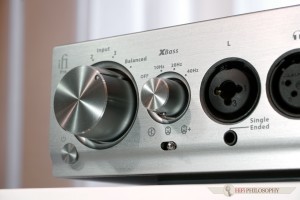
On the left we can select the input, adjust the gain of the lower registers and also choose a mode of operation.
But let me emphasize something really important here. I believe, and I’m pretty sure about it, that using ifi PRO, you shouldn’t stick to just one mode. Good quality records and top quality files can sound the best in the dark and more rough “Tube+”, whereas poorer quality gains a lot in “Tube” mode which is noticeably brighter and more smooth, with plenty of air. In general, it is more universal, but in some cases “Tube+” will play better, so it’s worth checking it out. Not in each case, but it can happen that “Tube+” will play better with a good material.








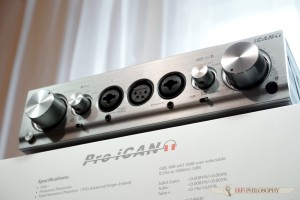
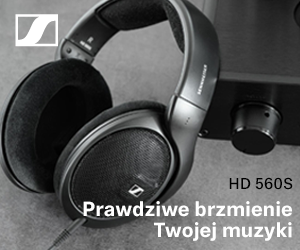

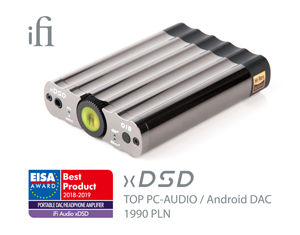

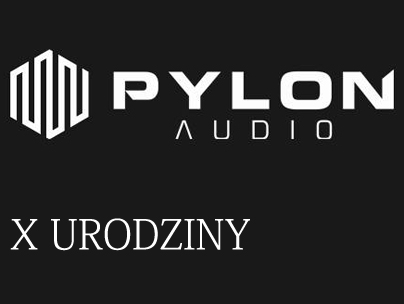
A w polish version też będzie ? 🙂
W polskiej już jest od jakiegoś czasu 🙂
http://hifiphilosophy.com/recenzja-ifi-pro-ican/
Dzięki ,chyba muszę częściej wchodzić na tę stronę bo nie ogarniam wszystkiego 🙂
Zapraszamy. Drzwi zawsze stoją otworem…